If you’re newer to Goonhammer Historicals, you may be confused with some of our phrases or terms – we refer to TooFatLardies and Lard America all the time. TooFatLardies is a UK-based wargaming company who produce rules that emphasize leadership, command and control, fog of war (friction), and historical accuracy. They average about one big ruleset release a year with supplements for other rulesets along the way. If you’re interested in a period you can likely find a ruleset they produce that covers it.

We here at Goonhammer Historicals really, really, really like their stuff. This article is an index of sorts to help you understand which game is which, sort out the periods involved, and hopefully pick a game to check out. We chose to list the games that are more recent or don’t have a parallel ruleset that they’ve produced – i.e. if there is a corps-level Civil War game they made years ago, and a newer one, we’ve listed the newer one. Many of these are available in PDF on their site, while some are PDF or print.
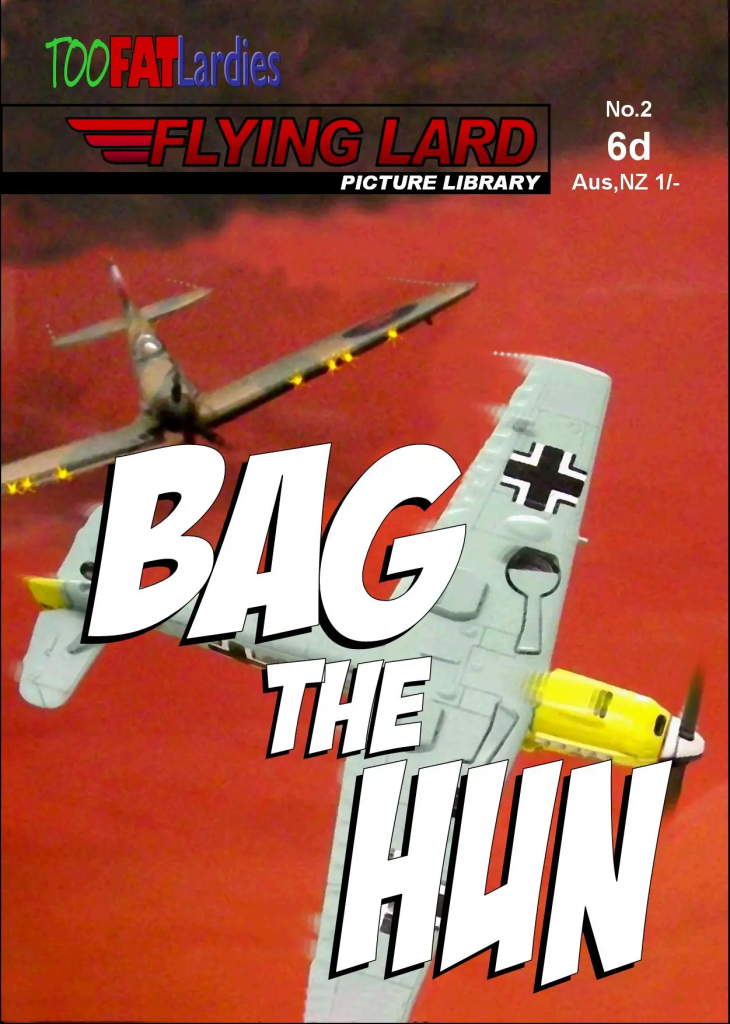
Table of Contents
Bag The Hun
Time Period: World War 2 air combat, with some WW1 and Jet Age supplements.
Scale: Whatever you like; the most common are 1/200, 1/300, 1/600, 1/1200 that we’ve seen.
Minis Number: Depends on what scenario you want to play, but it seems like two squadrons of four planes on either side seems to work pretty well for a matched scenario.
Description: Bag the Hun is an air-combat game that relies on card-draw mechanics to move planes around in formation and shoot their built-in guns at the enemy. Each squadron on the board has a card in the deck for movement and shooting, along with bonus cards for altitude (height, from first hand accounts, was a massive advantage), aces, and staying in formation. Damage is modeled pretty extensively, but not is not overly complicated – your plane can lose an engine (but you still get time to jump out), be set on fire, temporarily lose control, and more.
I really enjoy it because the random card draw means you’re not always going to know when your plane gets to activate; for me, it represents the furball of a dogfight immensely well that way. Your pilot may draw a Fire card and not have a target present; or you may line up on the tail of an enemy bomber and then immediately draw the fire card. The maneuvers are not difficult, either, for someone who is coming from a mostly infantry / tank game background.
Supplements Available: Squadron Forward (campaign play), BTH Scramble (compendium of lots of different materials), scenarios and campaigns
Print or PDF?: PDF – although you can get them printed at various sites or printed and bound
Cost: ~28 GBP for the main rules, compendium, and campaign supplement. Just 12.50 GBP for the main rules
Special Considerations: The game primarily uses D6s, but you’ll need a couple of D4s as well. You definitely want a hex mat of some sort, 6×4 at least, activation cards printed out (they’re available free here), and plane cards are nice so you don’t have to look up stats a lot
Goonhammer Articles: Review
YouTube Links: Storm of Steel has an excellent gameplay and review video here
Editor’s note: as someone who has spent a lot of brain time on Sharp Practice for years, Bag The Hun has grabbed me like I never thought any aerial combat game would. This is my favorite thing to think about right now. Watch this space for a lot more content!

Chain of Command
Time Period: World War 2.
Scale: Any, but at 15mm the figure and ground scales match. I and most of the people I know play it at 28mm.
Minis Number: 30-40 per side.
Description: Chain of Command is a platoon-scale game that covers the entirety of the Second World War. It is designed to capture friction, fog-of-war, and the “empty-battlefield” exceedingly well, and uses a novel mechanism where your unit activation resources are dynamically determined.
It is hands down my favorite wargame, and I’ve played a lot of them. If you’ve ever wanted to “forge a narrative” then this game delivers in spades. I captures the barely-managed chaos of WW2 combat in a way that is compelling and provides players with an abundance of meaningful decisions.
Supplements Available: There are several; the most important is probably “At The Sharp End,” which is the supplement that covers rules for running campaigns of linked games. It also includes rules for tracking casualties and morale effects from game to game, as well as a section to give some character to your platoon leaders and NCOs. Big Chain of Command is a free download that has rules for doing larger games with multiple platoons per side. Blitzkrieg 1940 covers army lists, scenarios, and special rules for the invasion of France and the Low Countries and is a fantastic buy if you are interested in this era of the war. Finally, there are scads of “Pint-Sized Campaigns” that cover a variety of different scenarios and historical actions, so named because they are intended to cost as much as a pint of beer at the local pub.
Print or PDF?: Your choice! Por que no los dos?
Cost: 17 GBP for PDF only, 28 GBP for print only, 45 GBP for both, but the latter bundle is frequently on sale for less.
Special Considerations: The game uses D6s, and having a bunch of them will make firing large units or several machineguns at once easier. In addition to the standard miniatures, terrain, and measuring tools you’ll need a set of 4-6 Patrol Markers for each side (poker chips work perfectly in a pinch) as well as 3-4 Jump-Off Points to represent each force’s deployment areas. TFL sells these, but most people make their own as it’s a great excuse to make little dioramas themed to your force.
Goonhammer Articles: Review, Totensonntag campaign
YouTube Links: Tabletop CP, Check Your Leader TV
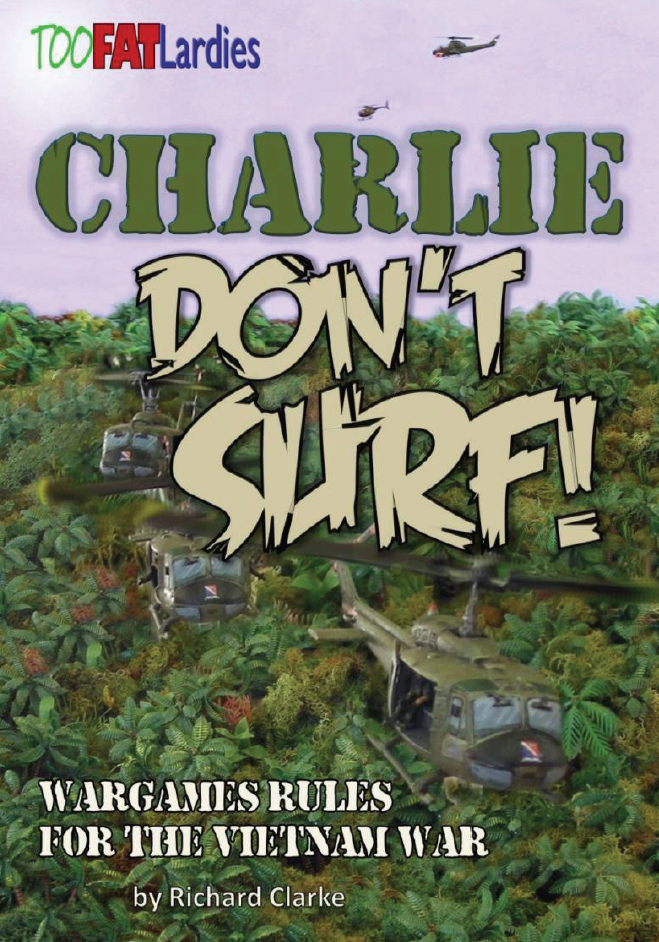
Charlie Don’t Surf
Time Period: Vietnam War – 1961-1975.
Scale: 15mm is where it was play-tested – but could do 6mm or even 28mm.
Minis Number: Many – one side may have around 100 models.
Description: Charlie Don’t Surf is a company sized game – so you’ll have multiple platoons per side fighting in a large Vietnam engagement. The author (Rich Clarke) went to great depths to try to make sure it wasn’t just a turkey shoot with VC popping up for the Americans to fight, and instead wanted to show the strengths and weaknesses of each force in a better game.
The basic element in the game is an Infantry Squad, with Weapons Teams, AFVs and Helicopters showing up as well. Basing is however you want to do it – you could do 15mm with a bunch of guys on a base, or 15 or 28 with one guy per base. As long as you have a way of distinguishing your leaders and casualties, then you’re fine.
If you’re familiar with Chain of Command or Sharp Practice then you already have a little bit of an idea of how Leaders work in the game – they can command people around themselves, un-pin units, etc. Each unit activates when their card is pulled, and then they can do a certain number of actions – this is dependent on troop quality/training and size of the unit. For instance, a 10 man unit of regular US infantry can do four actions, while a four man unit of Marines can do two.
Supplements Available: Surf’s Up – sixteen different scenarios for the game plus a campaign system and ANZAC force chart
Print or PDF?: PDF only
Cost: 12 GBP
Special Considerations: the game uses an Average Dice, a cube with faces marked 2,3,3,4,4,5. The game also uses Blinds – basically a Fog of War that hides your troops until they’ve been spotted. They can move around, but once they shoot or are spotted by enemies they’re placed.
Goonhammer Articles: None (yet!)
YouTube Links: –

Dux Britannarium
Time Period: Post-Roman Britain.
Scale: Any that allows for individual casualty removal (I play at 28mm using Victrix miniatures).
Minis Number: 30-40 per side.
Description: Dux Britanniarum covers the Saxon invasion of Britain from the middle of the 5th to the end of the 6th century AD. It covers both skirmishes and pitched battles, with some really characterful bits for whipping your troops into a frenzy (or giving them “liquid courage”) before the fight. It also includes complete rules for running campaigns of conquest, with Saxon warlords trying to establish themselves and Britons trying to keep the raiders at bay. These include extra elements like determining what kinds of fights take place, laying sieges, replacing casualties, and earning enough cash that you can pay tribute to bigger powers.
Supplements Available: The Raiders expansion, adding forces for the Picts, Scotti, and Irish.
Print or PDF?: Both.
Cost: 28 GBP for print, 17 GBP for PDF, 37 GBP for both. The raider expansion is 18 GBP for print, 12 GBP for PDF, and 25 GBP for both
Special Considerations: Like most Lardy games, it uses D6s and it is handy to have maybe 20 or so on hand. The game uses cards for activation and special abilities. A deck of cards for the basic game is 9 GBP, and an additional 9 GBP for the raiders deck. In both cases, you can save yourself money by purchasing the rules and cards together as a bundle.
Goonhammer Articles: None (yet!)
YouTube Links: The Crusty Colonel’s campaign
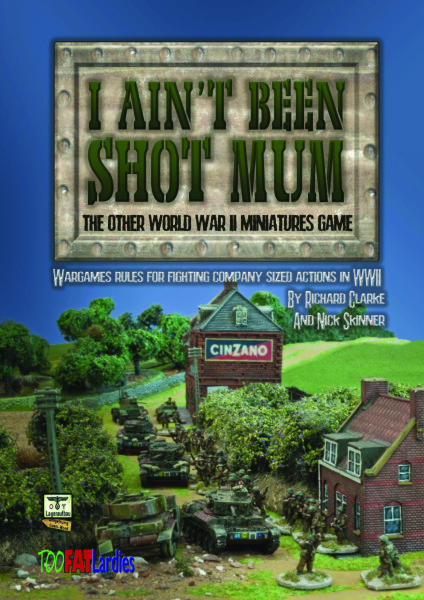
I Ain’t Been Shot Mum
Time Period: WW2.
Scale: Any, but generally intended for 10-15mm.
Minis Number: Company level – so a few platoons a side.
Description: First things first – I Ain’t Been Shot Mum is a play on the name of a British WW2 sitcom from the 70s, It Ain’t Half Hot, Mum. Getting that out of the way for us Americans, IABSM is actually one of TFL’s longest standing rulesets – it’s currently in a 3rd Edition that was released in 2011. IABSM is somewhat similar in many aspects to Charlie Don’t Surf, especially in game size and mechanics, including Blinds, Leader cards, etc.
Interestingly enough, the game uses some conventions from Kriegsspiel, the first wargaming system created by von Reisswitz in 1824, to solve functions in the game like firing. The main rulebook holds force lists for Britain, Germany, and the USA with many supplements including more. Indeed, this system probably has the most supplemental information available of any TFL games.
Supplements Available: Quadrant 13, a sci-fi conversion of IABSM, tons of campaign and force supplements.
Print or PDF?: PDF
Cost: 17 GBP
Special Considerations: A D10 and a deviation die of some sort are needed. It’s also useful to print out the card activation deck.
Goonhammer Articles: None (yet!)
YouTube Links: Storm of Steel

Infamy, Infamy!
Time Period: Late Republican/Early Imperial Rome.
Scale: Any that allows for individual casualty removal. As always, Victrix has some great kits in 28mm.
Minis Number: 40-50 per side.
Description: Infamy, Infamy is a skirmish-scale game set on the fringes of the Roman Empire. Players can elect to play the Roman legions (including some barbarian foederati or auxilia) or one of three tribal groups (the Britons, the Gauls, or the Germanic tribes). The game is an excellent look at combat between the well-trained and well-equipped Romans versus the more lightly equipped and less organized “barbarians,” and handles the asymmetry between these methods of fighting in a way that is unique and interesting. Each tribal group has its own historically accurate flavor and they feel different in play.
Like most TFL games, this one encapsulates uncertainty and fog-of-war in a way that will always keep you guessing. The card-based activation is familiar to anyone who has played Sharp Practice 2 and will always present you with interesting and meaningful decisions. There are rules for campaigns included as well, though these are not as in-depth as those presented in other games like Dux Britanniarum.
Supplements Available: None yet.
Print or PDF?: Both.
Cost: 28 GBP for print, 17 GBP for PDF, 10 GBP for the card deck. Bundles of any or all of the above can save you some cash.
Special Considerations: The game exclusively uses D6s, though having them in a couple of different colors might help. There is a deck of cards used for unit activation and special abilities, which can be purchased on its own for 10 GBP or at a discount as part of a rules bundle. Additionally, there are markers for certain unit conditions (e.g. Roman legion in close or open order). You can easily make your own, but the bundles also come with the option to get laser-cut markers. Finally, the game uses markers for deployment and ambush points, and while you could use any convenient token like a poker chip it’s a great excuse to make little themed dioramas in much the same fashion as Chain of Command.
Goonhammer Articles: Review
YouTube Links: TooFatLardies
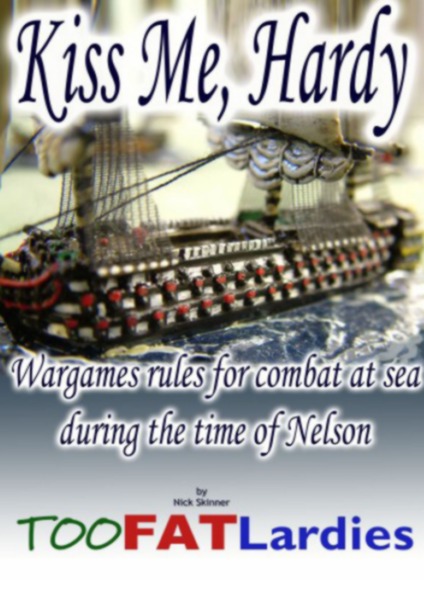
Kiss Me Hardy
Time Period: Ship warfare during the Napelonic Wars, but could be used all the way from SYW to Crimea.
Scale: Designed for 1/1200, but can use other scales.
Minis Number: Up to the player as to how many they wish to use based on the scenario.
Description: To get it out of the way (again), Kiss Me Hardy refers to the famous possible last words of Admiral Horatio Nelson to Captain Hardy after he’d been shot by a French sniper.
This is one of TFL’s oldest (if not the oldest) rulesets available, having been written in 2003 by Nick Skinner. Even then, with this ruleset legally allowed to drink alcohol in most US states, it is still well loved and played at many cons around the globe annually. The author states up front that the ruleset is not a complex, crunchy, simulation of every aspect of sailing the high seas – but from my reading, neither is it a quick-play ‘make decisions and toss dice!’ system, either.
I really enjoy when the author lays out assumptions at the beginning of the ruleset – it shows how the author has decided to write the rules, conventions and caveats they’ve taken into account, and gives you an idea how the game will play. Assumptions here are that there are three types of crews, with the Royal Navy having the best (of course). Crews set their sails for the situation and use the appropriate shot for the situation, so you don’t have to micromanage a lot of that stuff. Formations take part here (like most TFL games) where navies can line up but then it takes leadership and experience to keep them going.
This ruleset was produced before TFL really developed their graphic design chops, and it shows – but don’t let that stop you. This ruleset is well worth the time!
Supplements Available: mostly articles in the yearly / twice yearly specials from previous years.
Print or PDF?: PDF
Cost: 12 GBP
Special Considerations: the game is written with centimeters being the primary measurement. I don’t think that’s a negative, it’s just different for us Americans, so just an FYI. You’ll need D6, D4, D20, and percentage dice.
Goonhammer Articles: None (yet!)
YouTube Links: –
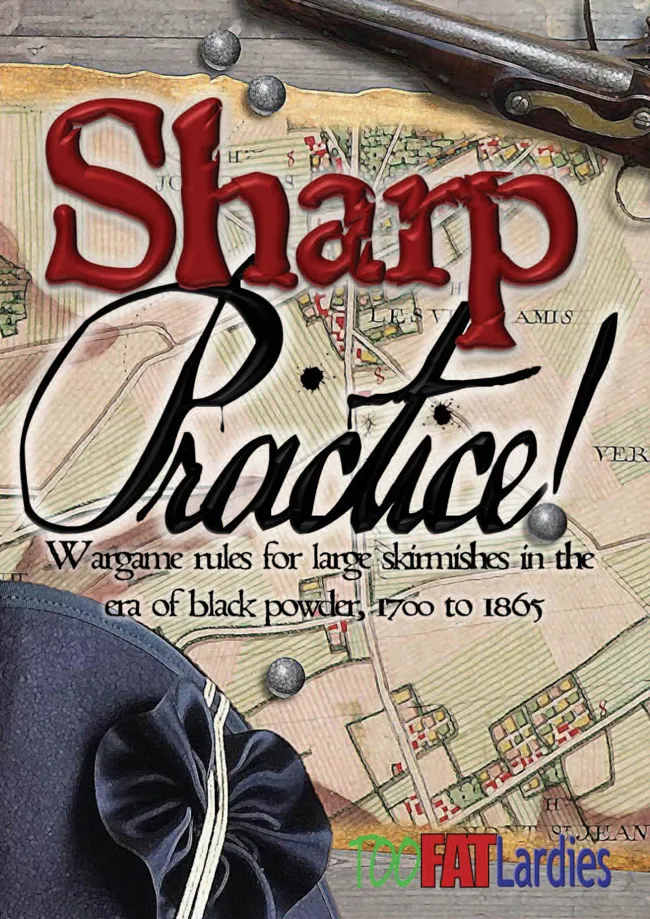
Sharp Practice
Time Period: The Black Powder Era (roughly 1700-1870).
Scale: Any, but uses individual casualty removal.
Minis Number: 30-80 per side.
Description: Sharp Practice, now in its second edition, is a game of medium-to-large skirmish-scale engagements in the era of black powder muskets. Players control small forces of troops engaged in the kinds of shenanigans you’d see in any of the episodes of Sharpe’s Rifles (a series from which the game’s name is partially derived). The game has rules for line and light infantry, various types of cavalry, artillery, and even “tribal” mobs (be they natives, basket-hilted claymore-wielding Jacobite Scots, or sepoy rabble).
Though it can easily handle engagements throughout the black powder era, the game includes “army lists” for the American Revolutionary War, the French & Indian War, the Peninsular Campaign (Napoleonic Wars), the Sepoy (Indian) Mutiny, and the American Civil War. You can find army lists for loads of other forces online or in the various Lard Annuals, so if you’ve always wanted to play a rag-tag group of Napoleon’s soldiers retreating from Moscow with Russian Cossacks hot on their heels, SP2 absolutely has you covered. One of the great things about this rule set is that it does cover a significant span of time, and I can think of few other games where buying a single book is going to give you the ability to play out so many different conflicts.
The game uses a card-based unit activation system in which you never know when (or if!) your units will activate. Leaders and Command Cards can mitigate some of the uncertainty, but represent a resource that you’ll need to use cleverly if you want to triumph over your opponent.
Supplements Available: Dawns & Departures, which is the campaign system for Sharp Practice 2. This supplement introduces a very clever system that combines elements of both map-based and ladder-based campaigns and does a really nice job of laying out different campaign objectives that make for loads of replayability. Because the game can cover so many different locations and conflicts, there are map terrain generators for a number of different places. While you can certainly have loads of fun playing one-off games of Sharp Practice (and we have!), this one is definitely with a look.
Additionally, there are a number of campaigns available through the TFL website. Many of these were originally written for the first edition of the game, but most require very little tinkering to make work with the SP2. And as always, the Lard Annuals often have articles on specific engagements, almost always with the associated army lists and any interesting special rules needed to represent them.
Print or PDF?: Both (PDF only for Dawns & Departures)
Cost: 28 GBP for print, 17 GBP for PDF, 10 GBP for a deck of cards. Bundle deals will save you money on any or all of these. Dawns & Departures is 9 GBP.
Special Considerations: The game uses D6s for the resolution of all movement and firing, so bring a bunch! You can get tokens from TFL that serve as reminders of unit states (uncontrolled firing, unloaded muskets, etc), or you can make your own. Teddy bear fluff or cotton balls work great for this and look great on the tabletop.
Goonhammer Articles: Choosing a Period, Review, Basing, Movement, Firing
YouTube Links: Tabletop CP
Editor’s Note: Many of us Americans get caught out saying Sharp‘s Practice. There is no S for possession. It is definitely a play on the Sharpe movies, but it’s different: in British parlance sharp practice is: crafty or deceitful dealings, especially in business. It’s a play on words.

Through The Mud and the Blood
Time Period: WW1.
Scale: 15mm or 28mm.
Minis Number: Between 30 – 100 a side (large skirmish).
Description: TTMATB is another early ruleset for TFL, published in 2009. To me, the graphic design here is really when TFL were learning a ton and organizing and illustrating their works to a much higher degree. While it’s not a company level game – you could use 30 models a side to play if you wish (to me it’s close to Sharp Practice in size) – it does remind me of the earlier TFL rulesets in that you have Blinds, Spotting, and the action system that we’re all kinda familiar with.
One thing I noticed that helps differentiate it is the Training / Morale dichotomy – you can have Veterans with Good Morale, or you can have Veterans with Poor Morale, or Green troops with Good Morale – it’s not just a singular stat that says Veterans are the best at everything. There are also specialists – like scouts, runners, trench clearers, sentries, etc. that help bring the period to life. I really like that officers can use Whistles or Buglers to give commands, another detail that puts you in the period.
The basic building block of troops for this ruleset is really up to you – you can have them operate in sections, squads, or formations, as the tactics evolved rapidly during the war. Formations can be commanded by Officers until they are fired upon – then they break down into individual groups that have to be given orders by Big Men (leaders).
Supplements Available: Triumphant Standards (scenarios for the First Irish War of Independence, Freikorps and German revolutionaries, and the theoretical British Civil War of 1938), numerous scenarios from Lard Specials combined into one supplement called ‘Play The Game’, and two more scenario books (Eastern Front and a more general scenario book) you can find on the site for 7 GBP each
Print or PDF?: PDF
Cost: 10 GBP
Special Considerations: a card deck is needed, and there are Blinds like some of the other early TFL games. You’ll also need D6, D8, D10, a Deviation die, and an Average Die with 2,3,3,4,4,5 on it. If gas is being used you’ll have a little wind template thingy you can print and cut out.
Goonhammer Articles: None (yet!)
YouTube Links: Storm of Steel

What a Tanker!
Time Period: World War 2.
Scale: Any! Whether it’s big tanks or tiny tanks, tanks are cool!
Minis Number: 1-5 per player.
Description: What a Tanker is a fast, fun game of armored combat between tanks. Each player controls anywhere from one to a few individual tanks duking it out on the battlefield. Using a “Command Dice” mechanism reminiscent of Chain of Command, it does a great job of capturing the chaos of the battlefield, where you don’t know from one turn to the next what activation resources you’ll have on hand. And as your tank sustains damage, getting it (and your potentially wounded crew) to do what you want gets increasingly challenging.
The basic rules are extremely simple to pick up (my kids can play it), but the game still retains a surprising amount of tactical nuance. The game also includes rules for your tank crew gaining experience from one engagement to the next, as well as a campaign system that lets your crew move up to bigger and better tanks as the war goes on. If you like things with treads, this one is for you.
Supplements Available: The 2019 Lard Annual magazine included an article that adds anti-tank guns to the mix and the 2023 Lard Annual had rules for infantry anti-tank units (AT rifles, PIATs, bazookas, etc), both of which can really spice things up.
Print or PDF?: Both
Cost: 28 GBP for print, 16 GBP for PDF
Special Considerations: The game is best when played with a decent amount of terrain, as it will make maneuver more important. The game uses D6s, each player will want to have 6 for their “Command Dice” and maybe a dozen or so more for resolving moving and shooting actions. There are laser-cut tokens used to denote unit conditions (hatch buttoned/unbuttoned, main gun loaded, target acquired, etc) that you can order from TFL, or you can mark these using any convenient thing you have on hand as a reminder.
Goonhammer Articles: Review
YouTube Links: TFL YouTube Channel

What a Cowboy!
Time Period: Wild West.
Scale: Most people will play in 28mm, but no reason you couldn’t play in another.
Minis Number: 3-6 a side.
Description: What A Cowboy is TFL’s newest full game release and shows all the graphic design and organization abilities that TFL staff have learned through the years. It’s a beautiful rulebook with a ton of art, diagrams, and tables showing all the information you need to play the game.
What A Cowboy is built from the What A Tanker! Engine – the activation dice are used, the spotting, aiming, reloading, movement etc. are similar. Each player will bring 3-4 dudes to fight over a smaller board with as much terrain as you like – be it a frontier burg or a hideout in the high plains.
WAC is not like most cowboy games you’ve played – it isn’t each player get a turn, they move and shoot, then pass the turn. Like almost every TFL game, players don’t always get to command their cowboy to do every single thing they want. When it’s their turn for activation (randomly, from a card deck with a card assigned to each cowboy), they roll their activation dice and then the dice tell them how they can activate their model. Minis can use an action to move, spot, aim, shoot, or even start a brawl by moving into contact with the enemy.
The campaign is the heart of the game – like many TFL rulesets – where you take Your Guys through a series of battles and see how they grow (or don’t). There are four levels for your cowboys – Greenhorn, Shootist, Gunslinger, and Legend. Your Guys can grow and become these different quality types by surviving and doing epic wild west feats. There are six scenarios included but obviously you can create your own.
Supplements Available: Articles in the Lard Specials so far.
Print or PDF?: Both are available – cards are still in print as well.
Cost: 28 GBP for print copy, 17 for PDF.
Special Considerations: I’d highly recommend you get the cards with your order, as it includes activation cards as well as the really useful Desperado Cards.
Goonhammer Articles: We have a review pending!
YouTube Links: TFL did a series of videos starting here.
Reisswitz Press
Reisswitz Press is an imprint inside of TFL that houses different games – written by familiar authors but not the TFL authors themselves. The games may emphasize different functions of war, play differently, and maybe lack some of the in-jokes or entendres that normal TFL games have. That doesn’t mean they aren’t up to the level of other TFL games – they wouldn’t be there if they didn’t pass muster.
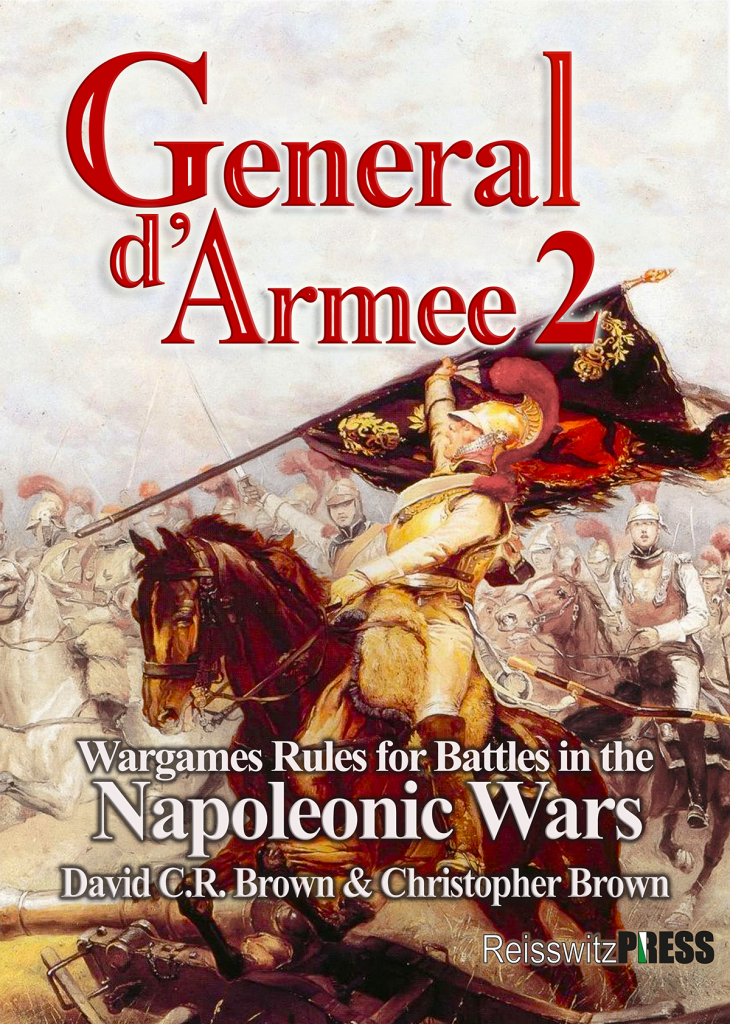
General d’Armee 2
Time Period: Napoleonic Wars.
Scale: 6mm to 28mm.
Minis Number: Tons – this is a division or corps level game.
Description: The author, Dave Brown, has serious wargame writing chops, having written General de Brigade and other rulesets prior to release GDA 1. One of the biggest points of emphasis for this game are the ADC system – Aide de Camps – who move around the battlefield issuing orders and hoping they get followed. Morale plays a huge factor in the game, as letting your troops take too much damage and fatigue will make them nearly useless.
The basic unit in the game is the battalion (for movement), while the brigade is the lowest tactical element (meaning you can give it orders). A few brigades on either side will give a good 2-4 hour game that can come to a conclusion.
Supplements Available: 1813 – The Battles for Germany, Vitoria – The Battle for Spain, 1815 – The Hundred Days.
Print or PDF?: Both.
Cost: 28 GBP in print, 16 GBP in PDF. Grab both for 33 GBP
Special Considerations: there are tokens that are available and very affordable that help keep track of all the different things happening to the units on the board. Highly recommended.
Goonhammer articles: None (yet!)
YouTube Links: TooFatLardies General d’Armee Intro
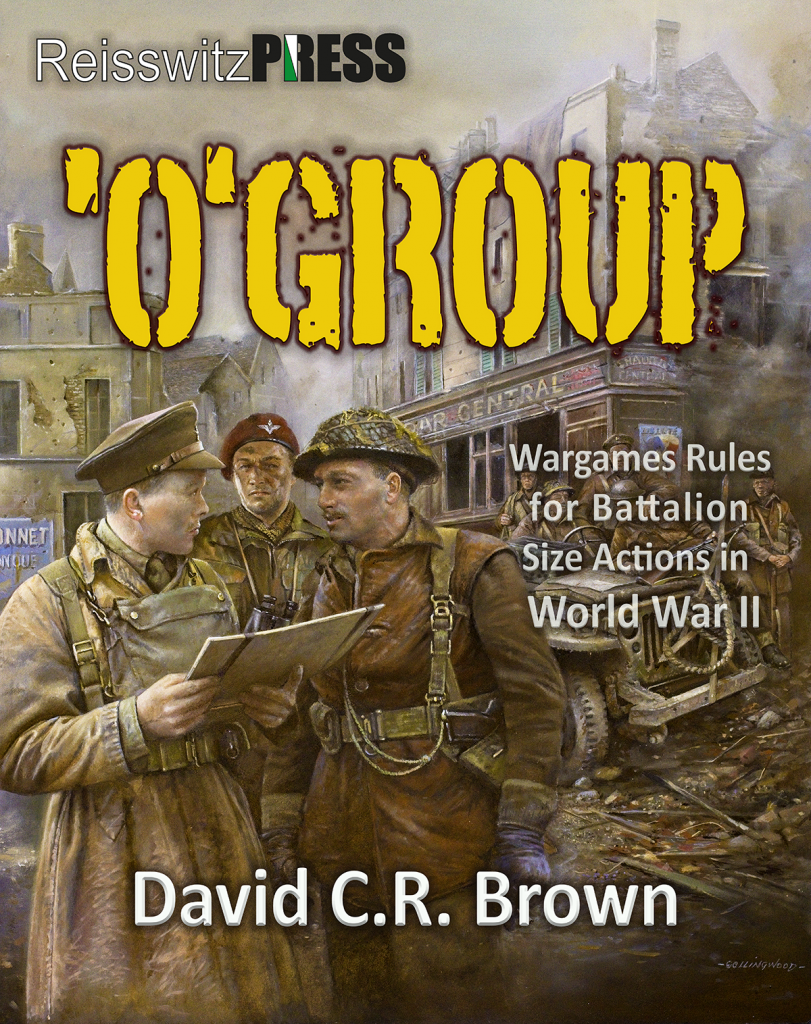
‘O’ Group
Time Period: WW2.
Scale: 15m seems best.
Minis number: Likely three companies on either side.
Description: Another Dave Brown joint, this WW2 game is set at a company or battalion level, with bases of troops representing squads or sections and individual tanks representing a few tanks. It is set up in an IGOUGO manner with players rolling for initiative, but enemy troops can and will interrupt with defensive fire when targets present themselves. Units will take shock, just like most TFL games. Players familiar with Chain of Command will like seeing the use of Patrols here – basically jump off points for groups coming onto the board.
Command and control is definitely emphasized, as players will find when they get into the game they have to choose between managing morale and issuing orders to get their soldiers moving and doing things. Company commanders are essential, as you’ll have – if you’re playing a textbook battalion – nine platoons on the board. Someone has to be directing traffic!
Supplements Available: 1940: The Fall of France and the Low Countries, 1941 to 1943: Barbarossa to Citadel, 1941: The Battle for Normandy.
Print or PDF?: Both.
Cost: 28 GBP for the print version, 17 for the PDF, or 34 for both.
Special Considerations: Tokens can be purchased with rulebook purchase that will help make gameplay easier. Highly recommended.
Goonhammer Articles: None (yet!)
YouTube Links: TooFatLardies ‘O’ Group playlist

Pickett’s Charge
Time Period: American Civil War (1861-1865).
Scale: Any, but given the size of the forces involved you’ll likely want to go relatively small unless you have a huge table.
Minis Number: 200+ per side.
Description: Pickett’s Charge is a divisional scale game of mass battles set in the American Civil War. It builds on some of the same concepts as General d’Armee (Napoleonic Wars), but incorporates some of the nuance and technological change that was happening during the ACW. The game uses a fantastic activation mechanism that gives the player the chance to influence things in their favor, but prevents “absolute control” over one’s forces. Sometimes that jerk Sickles is just not going to advance no matter what you tell him, and you’re just going to have to figure out how to overcome that.
The basic unit of command is the brigade, though fire and maneuver is handled by regiment. There is also a section of the book that gives you options for expanding the game up to the corps level (with multiple players per side, each controlling a division). Make no mistake, this is a game about big battles and you’re going to be plunking a bunch of minis on the table. The game gives some advice for building forces at various figure scales, but I don’t think I’d try this one at larger than 15mm.
Though the game only covers the ACW, that war is remarkably well documented in terms of which forces took part, what their orders of battle were, and what the terrain they fought over looked like. You could game for years and not cover everything that happened in the ACW, and that’s even before you get into some of the “what if?” scenarios.
Supplements Available: None yet.
Print or PDF?: Both.
Cost: 28 GBP for print, 17 GBP for PDF. As always, discounts can be had by bundling.
Special Considerations: The game exclusively uses D6s for all resolution, and firing is done by unit rather than by model (thank goodness!). As such, you’ll only need a few for most things in the game.
Goonhammer Articles: Review
YouTube Links: Check Your Leader TV
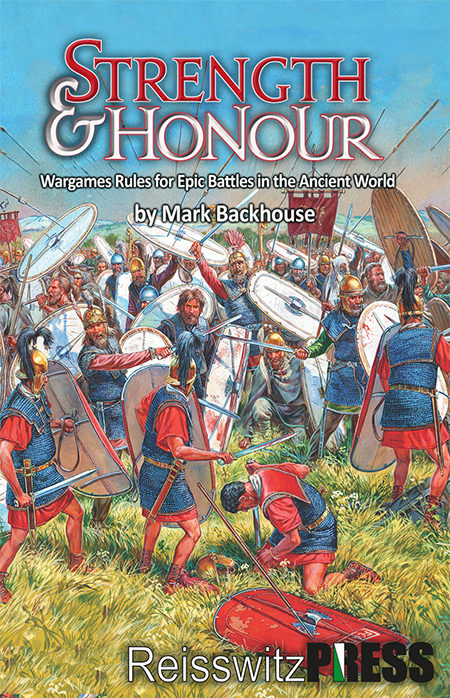
Strength & Honour
Time Period: Ancients – from 105BC to 200 AD.
Scale: You can use any scale, but small scale (the smallest of scales) works really well to show the game off.
Minis Number: Depending on scale, lots – if you do something like 2mm you can abstract it. It seems like most games will have maybe a dozen elements on either side.
Description: Written by Mark Backhouse, Strength & Honour represents ancient (from the start of the Marian reforms in Rome around 105BC, when the professional Roman legionaries organised in cohorts replaced the older Republican Legion structure of maniples, through to about 200AD) conflict using a fast-resolution function to play games in a smaller space in an evening.
As is present with every other game on our list, command and control is supremely important – and your troops won’t always listen to you. Bases of models (or abstractions) can represent anywhere from 1,000 to 10,000 troops all on one base – that’s why 2mm is a great scale for this.
The battlefield is divided up into a grid using squares – usually a 24 x 16 square area.

Strength & Honour is really different from most of the other games we’ve talked about here today, and not one we’ve played yet here at Goonhammer. I’ve tried to give you an idea here of what the game is like, but we definitely recommend checking out the YouTube videos below to get an even better idea. For 16 GBP the rules are hugely affordable, so checking them out isn’t going to break your bank. We hope to have a worthy review in the near future – we just didn’t want to give the readers the wrong impression of the rest of the game.
Supplements Available: The game is relatively new, so content is still being created.
Print or PDF?: Both.
Cost: 16 GBP for PDF, 28 GBP for print
Special Considerations: the game actually has official printable armies – paper sheets you can mount on cardboard or something similar and push across the table that look sweet. For 5 GBP it’s worth a try! In addition, two decks can be printed out – the Setback deck and the Disaster deck. Ominous!
Goonhammer Articles: None (yet!)
YouTube Links: TooFatLardies Channel
That’s it for our TooFatLardies game index – we hope this gives you some games to check out. Check back later as this index will be updated with new games, supplements, and Goonhammer article links when we write them. Thanks for reading!
Have any questions or feedback? Drop us a note in the comments below or email us at contact@goonhammer.com



You must be logged in to post a comment.